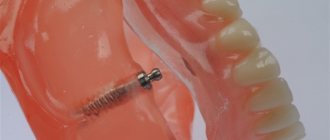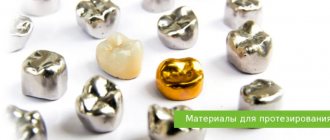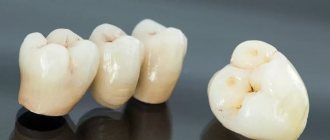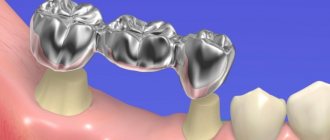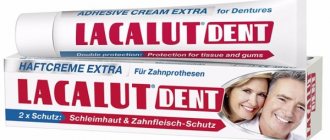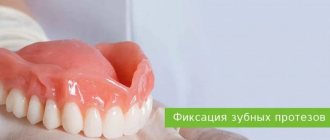In modern dentistry, many different methods are used to restore the dentition in case of partial or complete loss of its units. The choice of technology depends, in particular, on the timing of dental prosthetics. The difference in the duration of treatment can be up to several months, depending on how soon and how high-quality the patient wants to get.
Timing of prosthetics on implants
If the patient chose implantation to restore teeth, the final stage may occur in six months or longer. This is due to the fact that before the installation of prostheses you have to undergo several procedures and operations. In particular, when using the classical technique, before obtaining the final result it is necessary:
- insert artificial roots into the jaw - implants;
- wait until the rods are overgrown with bone tissue and stabilized;
- undergo the second surgical stage of implantation to install the former;
- after two weeks, install the abutment and take impressions to make the crown;
- do a fitting and, if necessary, correction of the prosthesis.
After all these manipulations, the time comes to install a permanent artificial tooth. The general time frame for prosthetics, including implantation, in this case can range from four to seven months.
Types of dentures
Now let's talk about what types of dentures there are. Currently, in dentistry there are various designs for replacing one or more teeth, as well as for total prosthetics of an entire dentition. Based on the method of fastening dentures in the oral cavity, they are divided into the following categories.
Removable
The design of removable dentures consists of a base - a base and artificial crowns located on it. Such structures can be complete - to replace all the teeth of one jaw - or partial. As for the types of removable dentures, according to their structure they are classified into plate ones, which are attached to the palate by suction, and clasp structures with locks-attachments or clasps for fixation on the supporting teeth. They are easy to use, and usually patients do not have questions about how to install the structure themselves, or how to remove the denture for hygiene procedures or at night. Unlike other types of orthotics, repairing removable dentures in most cases helps extend the life of the dentures. Removable structures are of the following types:
- Nylon
- Acrylic
- Acrylic-free
Conditionally removable dentures
This type includes complete plate dentures for replacing all teeth supported on implants. This is the best option for those who value high quality but want to save money on prosthetics. In this case, both the upper denture and the lower denture are attached to artificial roots with special cement, and only a dentist can remove them if necessary. The main indication for the use of conditionally removable dentures is the inability to install a large number of artificial roots due to inadequate quality of bone tissue or due to lack of funds. Reviews of these types of dentures indicate that they represent excellent value for money.
Fixed
With the help of this type of orthopedic structures, damaged teeth (enamel, cracks, chips and other defects) are restored. They are also used in orthopedic treatment for the loss of one or more teeth. Only a doctor can correctly remove a denture from the non-removable category. And their service life, as a rule, depends on how responsibly the patient will take care of him, and on the types of dentures used.
- Tabs.
These are microprostheses made of composite materials, ceramics or zirconium oxide, which are manufactured in dental laboratories and are used instead of fillings if the tooth is destroyed by more than 1/3. High-quality dental inlays fit tightly to the tooth and protect it from further destruction.
- Veneers.
Thin onlays for correcting the color, shape and eliminating various defects of the front teeth. They are produced directly and indirectly. The direct method involves the formation of veneers from a composite material directly on the patient’s ground teeth, and the indirect method involves the creation of ceramic or zirconium oxide plates based on dental casts in dental laboratories. Orthopedic veneers are considered a new generation of dentures.
- Dental crowns.
These structures are caps made of biocompatible materials that are placed on the ground teeth and fixed with dental cement. Crowns are used when more than 2/3 of a tooth is destroyed. In addition, a dental crown can be used to restore a completely missing tooth by securing it to an installed implant.
- Bridge prosthesis.
These are permanent orthopedic structures consisting of two crowns and artificial teeth between them. The installation of bridge-type dentures is carried out using grinded teeth or implants implanted into the jawbone. In this case, a proper dental bridge should serve to replace no more than two missing teeth in a row.
- Implant.
An artificial tooth root that is implanted into the jaw bone and serves as a support for a separate crown, bridge, or full denture when replacing the entire dentition. The orthopedic structure is attached to the implant using an abutment retainer or dental cement. Implants usually come with a lifetime warranty and are permanent dentures and do not need to be replaced.
Prosthetics in complex cases
The duration of treatment, or rather the timing of prosthetics, may increase even more if additional surgical procedures are necessary. For example, to install a crown or bridge on implants, bone tissue augmentation may be necessary, since its volume is not enough for the full “implantation” of a titanium root. In some clinical situations, it is also necessary to perform gum grafting, which requires additional time.
It is sometimes possible to install a prosthesis in such difficult conditions only after a year. This is due to the fact that you first have to wait until the bone material takes root. Then install the implant and allocate time for osseointegration (overgrowth of the rod with bone tissue). And only then will the production of the prosthetic structure begin. It is impossible to speed up treatment in such situations due to certain biological “laws” that no dentist can change. The fusion of bone tissue particles requires a certain time and this must be accepted and taken into account.
Maintenance of installed structures
Patients should remember that caring for artificial teeth is no different from caring for natural teeth. It is very important to brush your teeth daily with toothpaste and a brush, and remove food debris after each meal. With removable dentures, this is a mandatory condition, since food debris between the artificial structures and the gums can cause inflammation.
Read more about caring for installed dentures in the material “How to properly care for removable and fixed dentures so that they last as long as possible.”
In addition, you should not eat too hard foods - nuts, seeds, crackers. Artificial teeth can easily break from excessive pressure.
Time frames for manufacturing and installation of prostheses based on natural teeth
The choice of simpler prosthetic methods is usually explained by the desire to reduce the cost of treatment, as well as install crowns or bridges as quickly as possible. In this case, new teeth can be obtained in just a few days or a couple of weeks. This is exactly what is required to:
- treat, depulpate and prepare supporting units;
- take impressions, on the basis of which a crown or bridge will be made in the laboratory;
- try on and adjust the new design;
- install the prosthesis on the stump of the abutment tooth.
Modern progressive methods make it possible to restore a damaged tooth in one day. We are talking about using computer technology to design and manufacture a prosthesis in just a few hours, right in the dentist’s office. Such a crown is machined with high precision in a special milling machine, after which it undergoes finishing processing and is installed on the abutment tooth.
New generation dentures
Today, patients considering which dentures are best to have a huge choice of designs made of biocompatible materials created using innovative technologies, for example, using a computer CAD/CAM system. Low-traumatic methods of orthopedic treatment and high quality dentures made of metal ceramics, ceramics and zirconium dioxide allow you to quickly and effectively restore the functions and aesthetics of the dentition, without causing harm to healthy teeth and even prolonging their life. Of course, the price of a new generation of dentures is quite high, but these costs will be fully justified by your new smile, flawless in all respects. Besides, nowadays you don’t have to worry about how dentures look. Orthopedic products made from any materials look natural and aesthetically pleasing, and diction does not suffer from modern dentures. Plus, if any problems arise with the design, you can always contact the same dentistry where it was installed for you, since all clinics, without exception, offer a guarantee on dentures.
Terms of removable prosthetics
The manufacture of removable structures also requires some time. First, the dentist takes impressions of the jaws and sends them to the laboratory. Then it takes two to three days to make the models, after which the first fitting is carried out. About three to five more working days are required to produce the future prosthesis. After trying it on and fitting it takes about a week. The patient then tries on the design again and, if necessary, adjustments are made again. Thus, the production of removable orthopedic structures takes an average of three weeks.
Taking impressions and casts of jaws
In order for a technician to make a denture, he needs an accurate model of the patient’s jaw. Copying of jaws and teeth is done by taking impressions.
During the first visit, the doctor introduces an impression mass into the patient’s mouth on a special spoon. The patient closes his jaws and waits 2-3 minutes for the impression mass to harden. Then the patient opens his jaws and the doctor takes out an exact imprint of the patient’s jaw and teeth.
For patients, the first visit is absolutely not tiring and usually takes about 30 minutes.
